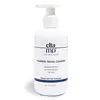What's inside
What's inside
 Key Ingredients
Key Ingredients

 Benefits
Benefits

 Concerns
Concerns

 Ingredients Side-by-side
Ingredients Side-by-side

Water
Skin ConditioningSodium Cocoyl Glycinate
CleansingAcrylates Copolymer
Methyl Perfluoroisobutyl Ether
SolventMethyl Perfluorobutyl Ether
SolventMagnesium Silicate
AbsorbentSodium Cocoyl Apple Amino Acids
Skin ConditioningBromelain
Skin ConditioningPEG/PPG-14/4 Dimethicone
EmulsifyingPolyhydroxystearic Acid
EmulsifyingIsononyl Isononanoate
EmollientEthylhexyl Isononanoate
EmollientSodium Cocamidopropyl Pg-Dimonium Chloride Phosphate
CleansingPhenoxyethanol
PreservativeSodium Hydroxide
BufferingCapryloyl Glycine
CleansingUndecylenoyl Glycine
CleansingSodium Bisulfite
AntioxidantPropylene Glycol
HumectantMaltodextrin
AbsorbentCoconut Acid
CleansingSodium Chloride
MaskingHexylene Glycol
EmulsifyingTetrasodium Glutamate Diacetate
Parfum
MaskingWater, Sodium Cocoyl Glycinate, Acrylates Copolymer, Methyl Perfluoroisobutyl Ether, Methyl Perfluorobutyl Ether, Magnesium Silicate, Sodium Cocoyl Apple Amino Acids, Bromelain, PEG/PPG-14/4 Dimethicone, Polyhydroxystearic Acid, Isononyl Isononanoate, Ethylhexyl Isononanoate, Sodium Cocamidopropyl Pg-Dimonium Chloride Phosphate, Phenoxyethanol, Sodium Hydroxide, Capryloyl Glycine, Undecylenoyl Glycine, Sodium Bisulfite, Propylene Glycol, Maltodextrin, Coconut Acid, Sodium Chloride, Hexylene Glycol, Tetrasodium Glutamate Diacetate, Parfum
Water
Skin ConditioningGlycerin
HumectantDecyl Glucoside
CleansingSodium Methyl Cocoyl Taurate
CleansingTaurine
BufferingSodium Cocoyl Apple Amino Acids
Skin ConditioningPhenoxyethanol
PreservativeCocamidopropyl Hydroxysultaine
CleansingSodium Cocoyl Glycinate
CleansingArginine
MaskingCitric Acid
BufferingSodium Chloride
MaskingHexylene Glycol
EmulsifyingBisabolol
MaskingLactobacillus/Pumpkin Ferment Extract
Skin ConditioningSaccharide Isomerate
HumectantEthylhexylglycerin
Skin ConditioningTocopheryl Acetate
AntioxidantSodium Lauroyl Lactylate
EmulsifyingCoconut Acid
CleansingGlycine
BufferingTetrasodium Glutamate Diacetate
Sodium Ascorbyl Phosphate
AntioxidantBromelain
Skin ConditioningLactobacillus Ferment
Skin ConditioningSodium Citrate
BufferingMaltodextrin
AbsorbentZingiber Officinale Root Extract
MaskingWater, Glycerin, Decyl Glucoside, Sodium Methyl Cocoyl Taurate, Taurine, Sodium Cocoyl Apple Amino Acids, Phenoxyethanol, Cocamidopropyl Hydroxysultaine, Sodium Cocoyl Glycinate, Arginine, Citric Acid, Sodium Chloride, Hexylene Glycol, Bisabolol, Lactobacillus/Pumpkin Ferment Extract, Saccharide Isomerate, Ethylhexylglycerin, Tocopheryl Acetate, Sodium Lauroyl Lactylate, Coconut Acid, Glycine, Tetrasodium Glutamate Diacetate, Sodium Ascorbyl Phosphate, Bromelain, Lactobacillus Ferment, Sodium Citrate, Maltodextrin, Zingiber Officinale Root Extract
 Reviews
Reviews

Ingredients Explained
These ingredients are found in both products.
Ingredients higher up in an ingredient list are typically present in a larger amount.
We don't have a description for Bromelain yet.
Coconut Acid isn't fungal acne safe.
Hexylene Glycol is a surfactant. Glycols are a class of alcohols. Hexylene Glycol is a surfactant and emulsifier.
As a surfactant, Hexylene Glycol helps gather dirt and oil on your skin to be washed away.
As an emulsifier, Hexylene Glycol helps keep water and oil together. This prevents them from separating in a product. Hexylene Glycol also thins out the texture of a product by lessening viscosity.
Hexylene Glycol has a small molecular weight.
Learn more about Hexylene GlycolMaltodextrin is a polysaccharide. It is derived from starch such as rice, corn, wheat, or potato starch.
In food, Maltodextrin is used to improve the texture and thicken a product. Due to its structure, it can help create a gel texture. As an emulsion stabilizer, it helps keep the ingredients in a product together.
As a polysaccharide, Maltodextrin has moisturizing properties. Polysaccharides are a type of carbohydrate. The top layer of skin uses polysaccharides to retain water, keeping the skin hydrated.
Maltodextrin is water soluble and has a sweet taste.
Learn more about MaltodextrinPhenoxyethanol is a preservative that has germicide, antimicrobial, and aromatic properties. Studies show that phenoxyethanol can prevent microbial growth. By itself, it has a scent that is similar to that of a rose.
It's often used in formulations along with Caprylyl Glycol to preserve the shelf life of products.
Chances are, you eat sodium chloride every day. Sodium Chloride is also known as table salt.
This ingredient has many purposes in skincare: thickener, emulsifier, and exfoliator.
You'll most likely find this ingredient in cleansers where it is used to create a gel-like texture. As an emulsifier, it also prevents ingredients from separating.
There is much debate on whether this ingredient is comedogenic. The short answer - comedogenic ratings don't tell the whole story. Learn more about comegodenic ratings here.
The concensus about this ingredient causing acne seems to be divided. Research is needed to understand if this ingredient does cause acne.
Scrubs may use salt as the primary exfoliating ingredient.
Learn more about Sodium ChlorideWe don't have a description for Sodium Cocoyl Apple Amino Acids yet.
Sodium Cocoyl Glycinate is a cleansing agent. It can be naturally derived or synthetically-created.
As a surfactant, it helps clean your skin by gathering dirt, oil, and other pollutants to be rinsed away more easily.
Tetrasodium Glutamate Diacetate is a chelating agent. Chelating agents help prevent metal ions from binding to other ingredients. This helps prevent unwanted effects and reactions from a product. These metal ions may come from water and are found in miniscule amounts.
Tetrasodium Glutamate Diacetate can also help other preservatives be more effective.
Water. It's the most common cosmetic ingredient of all. You'll usually see it at the top of ingredient lists, meaning that it makes up the largest part of the product.
So why is it so popular? Water most often acts as a solvent - this means that it helps dissolve other ingredients into the formulation.
You'll also recognize water as that liquid we all need to stay alive. If you see this, drink a glass of water. Stay hydrated!
Learn more about Water